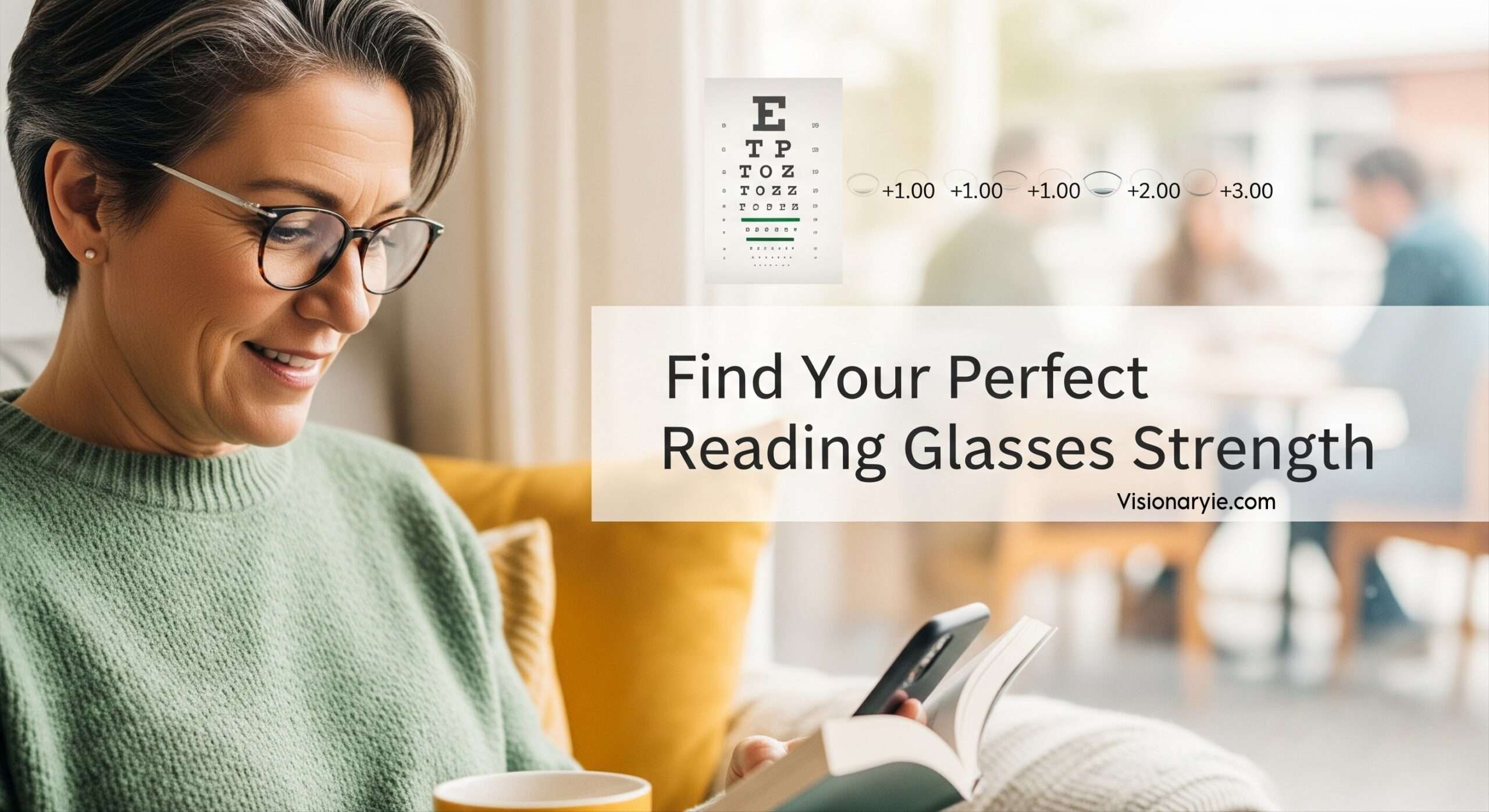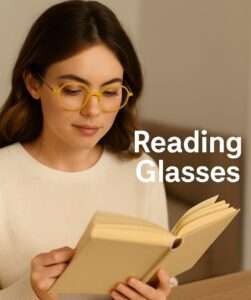Looking for reading glasses that are both stylish and functional?...
Read MoreHow to Find Your Reading Glasses Strength: A Guide to Choosing the Right Power
Our eyes are among the most remarkable tools we have, but they don’t stay perfect forever. From childhood through adulthood, we rely on them to read, scan, focus, and absorb endless details. In today’s digital world, our eyes are working harder than ever. Hours spent in front of screens add to the natural wear and tear, making it no surprise that with age, clear vision often becomes harder to maintain.
But here’s the truth: you’re not alone. Experiencing blurry or fuzzy vision and struggling to read fine print is completely normal. In fact, more than half of adults eventually use reading glasses. The key is knowing when it’s time to make the switch—and more importantly, understanding what reading glasses strength is right for you.
If you’re over 40 and struggling to read menus, books, or your phone screen without stretching your arms, it may be time to consider reading glasses. Deciding what frame suits your style and which material feels best is the fun part. But before that comes the big question: what strength reading glasses do I need? This guide breaks it down clearly so you can see your world in focus again.

Why Do We Need Reading Glasses?
It can be confusing and frustrating to suddenly struggle with tasks that were once second nature, like reading a newspaper or checking text messages. The reason behind this change is almost always presbyopia.
What is Presbyopia?
Presbyopia is an age-related condition in which your eyes lose the ability to focus on nearby objects. Inside your eyes, the lens is designed to flex, adjusting focus between near and far. Over time, however, the lens stiffens, reducing this flexibility. The result? Words and objects up close appear blurry or distorted.
Presbyopia usually develops between ages 40 and 65 and is one of the most common age-related vision changes.
Signs you may have presbyopia include:
Blurry vision when reading small print
Needing brighter light to see clearly
Squinting or straining your eyes during close-up work
Holding reading material farther away than usual
Eye fatigue or headaches after extended reading
If these symptoms sound familiar, chances are you may benefit from reading glasses.
Understanding Reading Glasses Strength
When you begin shopping for reading glasses, you’ll notice numbers like +1.00, +1.50, +2.00 and higher. These numbers indicate reading glasses strength, measured in diopters—the unit of lens power.
Think of it as the level of magnification your eyes need to see nearby objects clearly. Choosing the correct strength is essential; too low won’t correct the blur, and too high can cause eye strain or headaches.
Here’s a general guide to reading glasses strength by age:
Ages 40–45: +1.00 to +1.25
Ages 45–50: +1.50 to +1.75
Ages 50–55: +2.00 to +2.25
Ages 55–60: +2.50 to +2.75
Ages 60+: +3.00 or stronger
This chart provides an estimate, but remember—everyone’s eyes are different. The best strength for you depends on your unique vision needs.
How to Determine What Strength Reading Glasses You Need
The process of choosing reading glasses doesn’t have to be overwhelming. Here are the best ways to figure out your ideal reading glasses strength:
1. Visit an Eye Doctor
The most reliable method is an eye exam. An optometrist can measure your vision accurately, recommend the correct strength, and check for other eye conditions.
2. Use a Reading Chart at Home
Printable or online reading charts are simple tools that help estimate your reading glasses strength. Hold the chart at normal reading distance (about 14–16 inches) and test different strengths until the text appears sharp and comfortable.
3. Try on Glasses in Person
When shopping for ready-made readers, test multiple strengths. Choose the lowest strength that allows you to read clearly without squinting or straining.
4. Reassess Over Time
Your reading glasses strength will likely change every few years. Don’t be surprised if you need to increase strength gradually as presbyopia progresses.
Choosing the Right Style and Fit
Once you know your reading glasses strength, the next step is choosing frames that suit your personality and lifestyle. Thankfully, modern readers come in countless styles and materials, so you don’t have to compromise on fashion for function.
Tips for choosing the perfect pair:
Match frames to your face shape for a flattering look
Pick lightweight materials for everyday comfort
Explore fun colors or patterns for a stylish touch
Consider specialty lenses, such as blue light filters, if you spend hours on digital devices
Shopping online at trusted retailers like Visionaryie.com makes it easy to browse designs that balance clarity, comfort, and modern appeal.
Everyday Habits to Protect Your Vision
Even with the right glasses, healthy habits can reduce eye strain and keep your vision comfortable:
Use proper lighting while reading
Follow the 20-20-20 rule (every 20 minutes, look at something 20 feet away for 20 seconds)
Take breaks from long hours of screen time
Eat a diet rich in vitamins A, C, and omega-3 fatty acids
Clean and store your glasses properly to avoid scratches
Final Thoughts: Find Your Reading Glasses Strength with Confidence
Needing reading glasses is a natural part of aging, not something to fear. Presbyopia affects nearly everyone after 40, and the solution is simple: find the correct reading glasses strength to restore comfort and clarity.
To recap:
Presbyopia causes difficulty focusing up close but is easily managed.
Reading glasses strength is measured in diopters, with common ranges from +1.00 to +3.50 or higher.
You can determine your strength through an eye exam, at-home chart, or by testing different readers.
Comfort, fit, and style matter just as much as lens strength when choosing glasses.
By paying attention to your vision needs and making the right choice, you’ll enjoy the freedom of reading comfortably again—whether it’s a novel, a recipe, or your phone screen.
Plus 1.25 Reading Glasses: Clear Vision, Comfort, and Style for Everyday Use
Upgrade your reading experience with Plus 1.25 Reading Glasses at...
Read MoreHow to Choose the Best Reading Glasses for Your Eyes
After 40, your eyes naturally begin to lose their ability...
Read MoreBasics To Know How Reading Glasses Works
Basic To know About Reading Glasses Works Reading Glasses At...
Read More


